Much like the warfare it simulates, ARMA III is intense, messy, and challenging. The massive sprawl of two fiction Mediterranean islands provides the backdrop to near-future lethal operations that resemble little else in video games. Whereas most modern military games aim for the cinematic bombast of an action film, ARMA seeks inspiration from authentic clashes. The third iteration of this series of wartime simulations isn't about blood splashing unrealistically across the screen and playing whack-a-mole with waves of nonthreatening grunts. It's about the fire and ache you feel in your belly as you crawl toward your mission objective, fearful of the one bullet that could end your life in an instant.
Needless to say, patience is a necessary attribute if you wish to appreciate the wonders of ARMA III, though not just because you spend more time planning, scouting, and observing than you do firing weapons. It's also because you must spend more time than you might expect fiddling with menu settings to get the game to run at a decent frame rate in online sessions. It's because you'll spend time in the server browser seeking matches and modifications that best serve your needs. And it's because there's not as much developer-provided content as previous series installments had, leading you to sort through the available user-made content hoping for the cream of the crop to rise to the surface.
That ARMA III is still a work in progress--as much "platform" as it is "game"--is obvious not just from the prominence of player creations, but from the big "coming soon" message that arrives when you click on the campaign option. An episodic campaign is in the works, but for now, there's no focused single-player conflict to draw you in. There are, however, a number of showcases that introduce you to specific facets of the design, from infantry and armor to underwater navigation and drone operation. These disconnected missions are no substitute for a proper campaign, but they are good introductions to ARMA's unique take on large-scale warfare.
How you initially respond to ARMA III depends on your background with the series. If you're a newcomer, you'll be initially struck by the unusual control scheme, which has you using the mousewheel and spacebar to perform various actions, or the measured pace at which you crouch or vault over objects. (Forget bunny-hopping, of course.) If you're a returning fan, a new fluidity to the animations and an array of stances might stand out over other features, or perhaps how the weapons are now unlicensed rather than re-creations of real-world firearms.
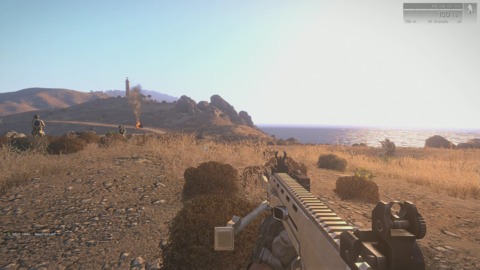
Are you a novice? You might hear the radio chatter and notice its stiffness, or cry out in frustration when every turn you make while controlling a tank as a gunner is accompanied by vocal commands. ("Left. Fast. Right. Right. Right. Fast.") Are you an ARMA fanatic? You will hear the radio chatter and cry out in elation that it sounds so much more natural than in ARMA II, thankful for the dialogue touches and audio mixing that make AI teammates sound more like real people. ARMA III's ambition in re-creating so many elements of modern warfare will astound you if this is your first foray into games of this ilk, and so it should. Yet there aren't as many unique vehicles and weapons as there are in ARMA II. There are numerous examples of one step forward, one step back.
As disappointing as it is that ARMA III doesn't come with more official content, the game benefits from its early public alpha and beta releases: there are already a great number of player-created scenarios, which are easily perused and added to your game thanks to Steam Workshop integration. Spending significant time with ARMA III involves accessing any number of modifications. Some are simple single-player missions that have you piloting a Ghosthawk chopper, ferrying troops around while flying low to avoid antiaircraft missiles. Others are popular online efforts, the most ubiquitous one for now being the Wasteland mod, a multiplayer survival mode that has you scrounging for weapons, ammo, and food while avoiding the violence of other players desperately clinging to life.
A mission requiring you to do little more than take off, fly, and land a helicopter might not sound compelling, but ARMA III's strength is in how tasks so seemingly simple in this game can provide so much tension. That's not because the flight controls are impenetrable, but because piloting requires self-control and an understanding of multiple nuances, such as how to use autohover and how to make the different camera perspectives work best for you.
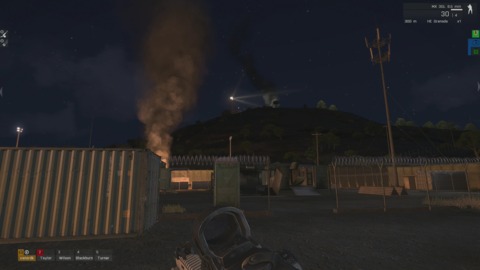
It might take you multiple failed attempts after falling victim to aggressive AA missiles and a few crash landings, but reaching the landing zone while under small arms fire and rescuing retreating infantry feels like a great triumph. When the men in your chopper thank you for the ride, you sense that they're not just grateful for the ride, but for the savior that dropped from the heavens. They, just like you, understand the peril of tasks as simple as flying, walking, and just being.
Mods like Wasteland, however, amplify ARMA III's frightening loneliness. The larger of the two islands is hardly an unblemished plain, but it doesn't feature the diversity or density of ARMA II's Chernarus, and is home to very few civilians. The even geography might make for some tedious air travel, but in Wasteland and its variants, the flatness means that every ravine and outpost is a vital sanctuary. When the sun sets, anxiety rises.
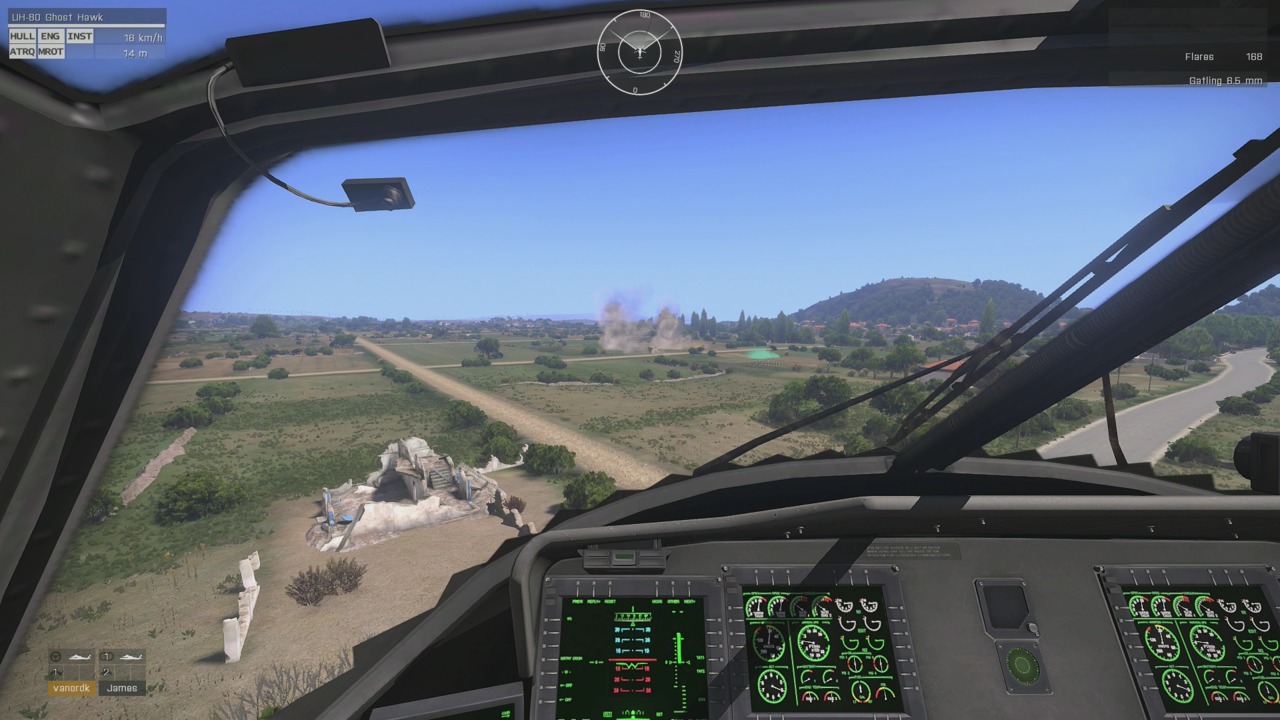
One possible scenario: Without night vision goggles, you and your buddy rely on your truck's lights to guide you toward a weapons store. On the way, you glimpse muzzle flash and pull off the main road. You get out of the vehicle and notice a telltale green aura, indicating someone has dropped glow sticks in the grass. The two of you approach to see a trio of looters rifling through the rear of an armored personnel carrier and gun them down before you fall victim to their murderous greed. Not only do you escape death, but you pilfer valuable goggles and binoculars from their corpses. That green glow is no longer a sign of danger, but of safety, as long as you are prepared to defend yourself. After all, that light might seem comforting, but it draws survivors to it like moths to a flame.
That isn't to say that you must rely on user creations to have your fun. Feel free to get started in the included Co-op, Defend, or Seize missions, all of which must be started up as a multiplayer game, though Co-op and Defend allow you to fill available slots with AI soldiers. In ARMA tradition, however, you shouldn't expect the AI to exhibit humanlike behavior. Oftentimes, enemy combatants fail to react to your presence even when you're a few feet away and in plain view, though gunners that do notice you have the eyesight of eagles, landing shots with eerie accuracy. Not that your teammates are the brightest bulbs either, sometimes failing to respond to the commands you issue from ARMA III's in-depth squad interface.
And so you should seek out populated multiplayer servers to find the most exhausting and rewarding battles. Mind you, this requires some legwork. You won't always know how a map or mod works until you've annoyed other players with your ignorance, or you might join a match you are comfortable with only to have some simpleton join the fray and stick a bunch of mines in front of a friendly transport chopper. (Demands to kick the moron quickly follow in the audio and text channels, of course.) And even in a fantastic match populated by military-minded grenadiers, visual performance is a problem. You might maintain a perfectly acceptable frame rate in single-player scenarios, only to find that large-scale warfare often entails large-scale slowdown.
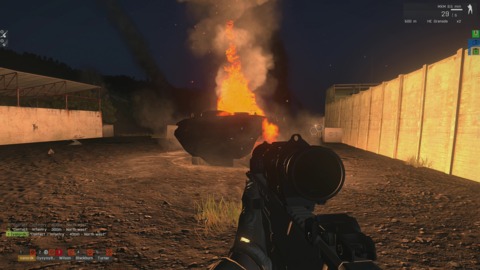
It's worth fiddling with your graphics settings to diminish the annoyances, though, because once you get into a fantastic match with organized players, ARMA III soars. Chat channels erupt with strategic commands and formal military parlance, giving the match a role-playing sensibility. A chopper pilot lands, and you and your squadmates board, hoping to be dropped near a factory that you must assault. However, the pilot must make a detour: a submersible and its helmsman need to be transported to the waters just off the coast. As you pass over a hot spot, missiles approach, but the pilot is on the ball: he fires off countermeasures, and for now, you have escaped a fiery death.
Finally, the chopper lands, and you leap out and press forward with your buddies. After several minutes of rushing forward, crouching, and going prone to scope the landscape ahead, you finally get into position and aim down your sights. Below, you see several enemy combatants in the streets, as small as ants. Your assault rifle may not be a sniping weapon, but it will do in a pinch. You carefully line up the shot and sink a bullet into a soldier's head but miss another, who runs behind a nearby structure. Unthinkingly, you rise and rush to the other side of the mound to your right, hoping to get a better line of sight, only to spot a heavy tank at the same time its driver spots you. You have given yourself away, along with your nearby comrades. And so you run, but it's too late: chasing after one enemy soldier has led to the demise of you and your mates. Better luck next time.
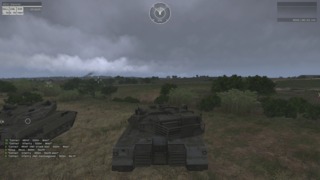
The vast island of Altis and its little brother Stratis aren't teeming with civilian life, but they do feature beautiful and lifelike vistas. ARMA II was impressive, too, but poor animations could make it hard to appreciate its achievements. Here, the improved animations create less distraction, and the environments can be terrific to behold. ARMA III makes no attempts to stylize what you see: these islands are meant to look like the real thing, and often do. When taking in the entire landscape, you notice how tree trunks and branches bend and warp as if molded by nature, and that they sway with the wind, but not in a way so scripted that they look like synchronized ballerinas sticking to precise choreography. Lighting and shadows are authentic enough that glimpsing your own shadow as you pass in front of a truck's headlights might make you jump.
ARMA III is a game with few modern counterparts. The influence of Operation Flashpoint isn't felt in many current games, even the modern OF, leaving the ARMA series to lead a charge accompanied by Red Orchestra, Iron Front, and too few others. With that uniqueness comes a dedicated community willing to overlook the flaws because they crave a kind of tension and large-scale teamwork unavailable anywhere else. You should consider joining that crowd. ARMA III is a beast. It occasionally flails and moans, but once you learn how to balance yourself upon it, it gives you a marvelous, turbulent, and memorable ride.